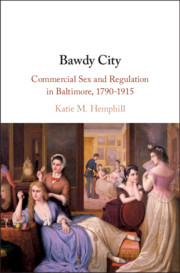Book contents
Bibliography
Published online by Cambridge University Press: 06 December 2019
- Type
- Chapter
- Information
- Bawdy CityCommercial Sex and Regulation in Baltimore, 1790–1915, pp. 303 - 326Publisher: Cambridge University PressPrint publication year: 2020



